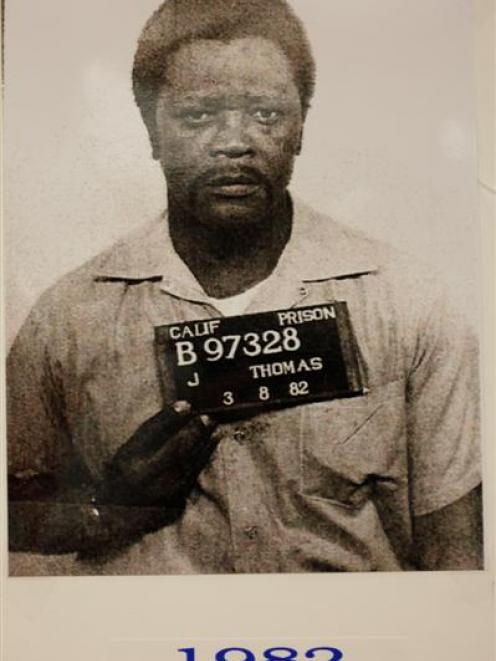How does a city as vibrant and diverse as Los Angeles become synonymous with some of the most heinous crimes in American history? The question lingers like a shadow over the City of Angels, where stories of serial killers have left an indelible mark on its urban landscape. Los Angeles has earned the grim distinction of being a hotspot for some of the most calculated and brutal murders in modern times. From Richard Ramirez, the infamous Night Stalker, to lesser-known yet equally chilling predators, the city’s dark underbelly reveals a side rarely depicted in Hollywood blockbusters.
Ricardo Leyva Muñoz Ramirez, better known as Richard Ramirez, was not just another criminal; he became a symbol of terror during his killing spree in Southern California from 1984 to 1985. Known for targeting unsuspecting victims in their homes, Ramirez's modus operandi involved breaking into residences at night, often leaving behind occult symbols that fueled public panic. His nickname, The Night Stalker, perfectly encapsulated the fear he instilled in residents who lived in constant dread of what lurked in the shadows after dark. Authorities eventually apprehended Ramirez following an intense manhunt, leading to his conviction and sentencing for multiple counts of murder, rape, and burglary. However, it wasn’t until June 7, 2013, that Ramirez met his end—not by execution but due to complications while awaiting lethal injection.
| Bio Data | |
|---|---|
| Name: | Ricardo Leyva Muñoz Ramirez (Richard Ramirez) |
| Date of Birth: | February 29, 1960 |
| Place of Birth: | El Paso, Texas |
| Date of Death: | June 7, 2013 |
| Cause of Death: | Complications related to illness |
| Nickname: | The Night Stalker |
| Career Highlights: |
- Convicted of murdering at least 13 people - Committed numerous rapes and burglaries - Active between 1984–1985 in Southern California |
| Legal Status: | Sentenced to death but died in prison |
| Reference Website: | Wikipedia Entry |
While Ramirez remains one of the most notorious figures associated with Los Angeles' darker chapters, other cases highlight the complexity of criminal behavior within the city. Lonnie David Franklin Jr., also known as the Grim Sleeper, operated under the radar for decades before being captured in 2010. Franklin's methodical approach allowed him to evade law enforcement for nearly two decades, preying predominantly on African American women in South Los Angeles. His arrest came only after advancements in DNA technology linked him to evidence collected from crime scenes dating back to the early 1980s. This case underscored both the challenges faced by investigators and the resilience required to solve cold cases.
Jerrid Joseph Powell, another convicted felon tied to four killings across Los Angeles County, exemplifies how seemingly ordinary individuals can harbor sinister intentions. Arrested in connection with three shooting deaths, Powell's story adds another layer to the city's grim narrative. Unlike Ramirez or Franklin, Powell did not rely on elaborate schemes or prolonged stalking periods. Instead, his acts appeared impulsive yet no less devastating, reinforcing the unpredictable nature of violence in urban environments.
Michael Hughes represents yet another chapter in Los Angeles' tragic history of serial killers. Operating largely unnoticed throughout the late 1990s and early 2000s, Hughes confessed to multiple murders motivated by a desire to shock others. His confessions revealed a deeply disturbed individual whose actions were driven more by psychological torment than financial gain or sexual gratification. Cases like these challenge conventional understandings of motive and intent, reminding society that the line between normalcy and depravity can sometimes blur alarmingly.
In addition to these high-profile offenders, there exists a broader pattern linking Los Angeles to serial killings spanning several decades. One such example involves the Riverside Prostitute Killer, whose identity remains unknown despite extensive investigations. Cathy Small, a young woman found murdered in 1997, became one of many victims attributed to this elusive figure. Advances in forensic science continue to offer hope for resolving such longstanding mysteries, even as new threats emerge.
Los Angeles' reputation as a serial killer capital stems not merely from isolated incidents but from systemic issues contributing to an environment conducive to such crimes. Factors ranging from socioeconomic disparities to inadequate mental health resources play significant roles in fostering conditions where predatory behavior thrives. Moreover, the sheer size and diversity of the metropolitan area complicate efforts to monitor and prevent such tragedies effectively.
Despite these grim realities, progress has been made through collaboration among law enforcement agencies, technological innovations, and increased community engagement. Cold case units dedicated to reopening unsolved murders have achieved remarkable successes, bringing closure to families long denied justice. Public awareness campaigns aimed at educating citizens about personal safety measures further empower communities to combat potential threats proactively.
Yet, the legacy of serial killers continues to haunt Los Angeles, serving as a stark reminder of humanity's capacity for evil. As each new revelation emerges, whether through archival discoveries or contemporary breakthroughs, the city grapples with reconciling its aspirational image with its harrowing past. For every Richard Ramirez or Lonnie Franklin Jr., countless questions remain unanswered, urging vigilance and reflection.
The intersection of celebrity culture and criminal justice in Los Angeles creates unique dynamics influencing public perception. Media coverage often amplifies certain aspects of these cases while neglecting others, shaping narratives that resonate far beyond local borders. Documentaries like Cold Case Files: The Grim Sleeper bring attention to forgotten victims while honoring those whose lives were cut short. Such platforms provide opportunities for dialogue, fostering greater understanding of the complexities surrounding serial homicide.
Ultimately, addressing the root causes underlying these atrocities requires sustained commitment from all stakeholders. Policymakers must prioritize funding initiatives targeting prevention and rehabilitation programs. Educators and healthcare providers need access to tools enabling early intervention for at-risk populations. And most importantly, communities themselves must foster environments rooted in empathy and mutual respect, reducing opportunities for exploitation and harm.
Los Angeles will always carry the weight of its infamous history, but acknowledging this burden is the first step toward transformation. By learning from past mistakes and embracing innovative solutions, the city can strive toward becoming a safer, more equitable place for everyone. After all, the same qualities that make Los Angeles a beacon of creativity and opportunity also hold the keys to overcoming its darkest moments.



